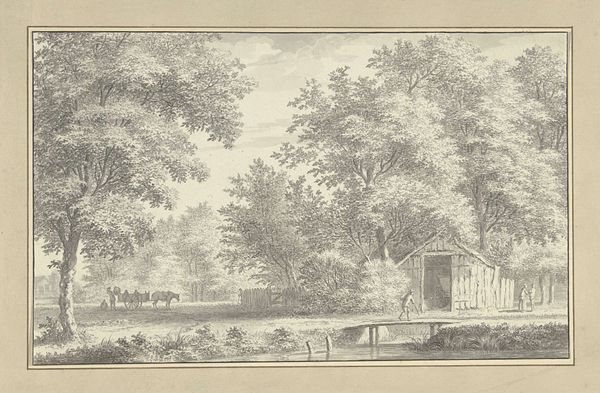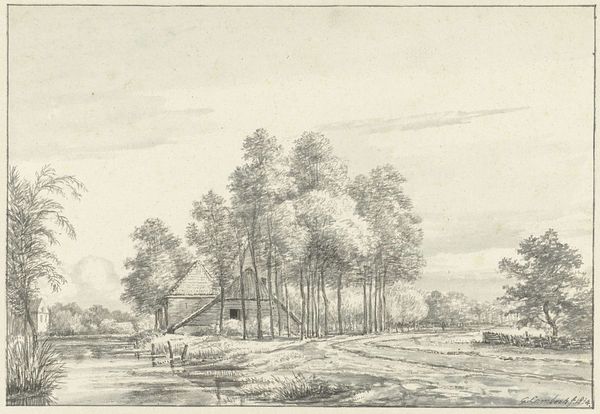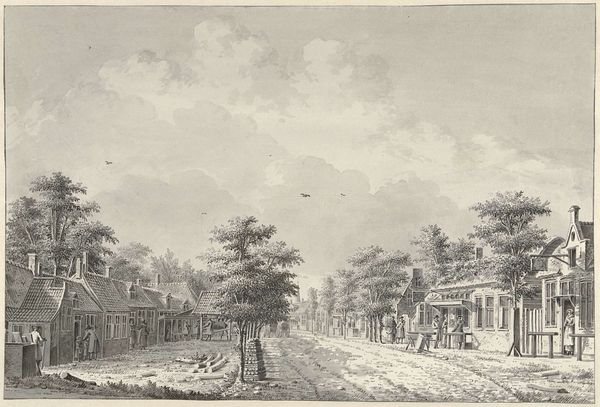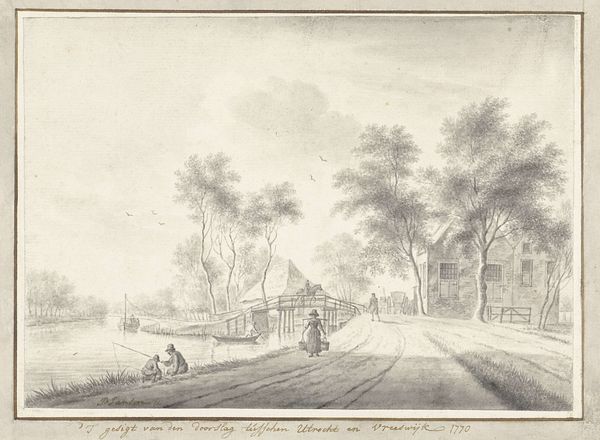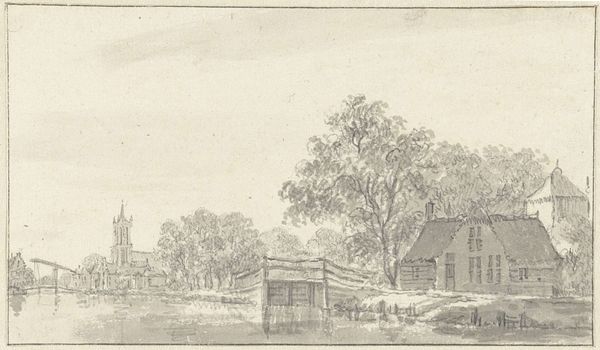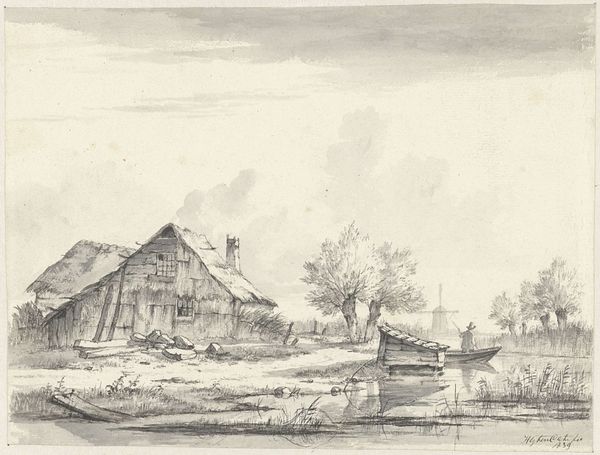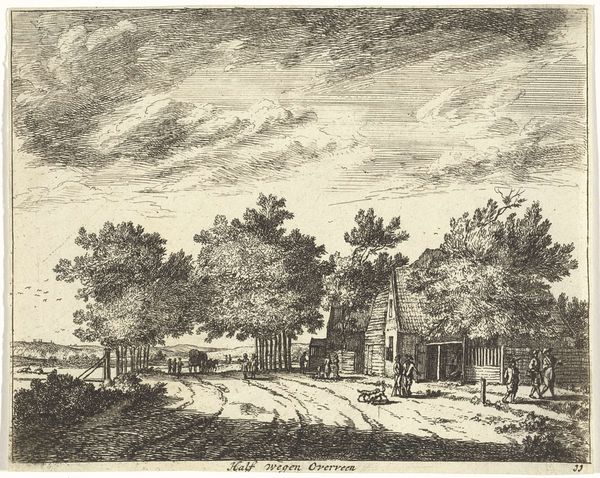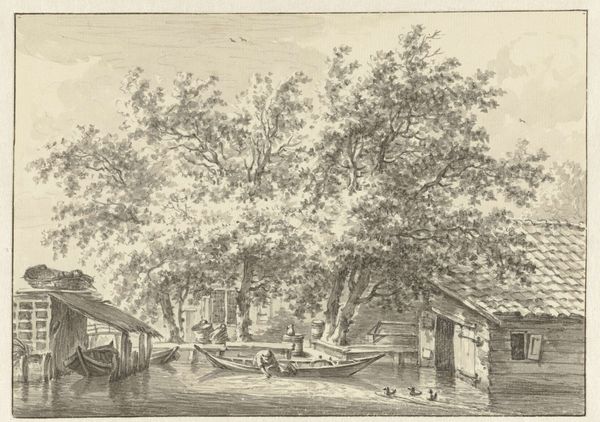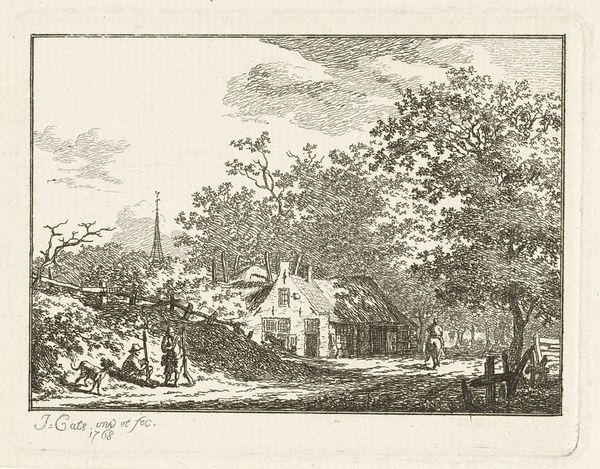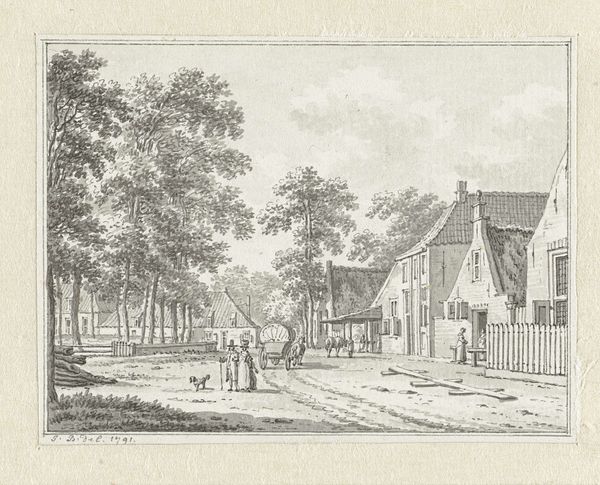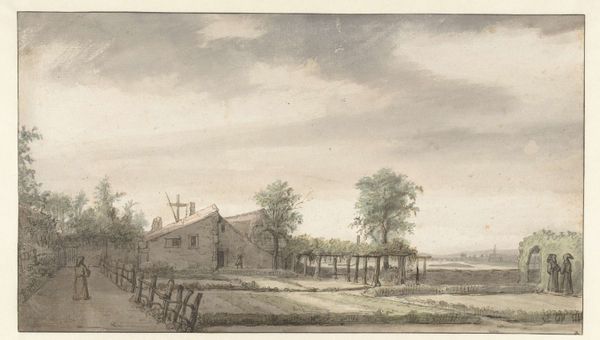
drawing, engraving
#
drawing
#
neoclacissism
#
old engraving style
#
landscape
#
cityscape
#
engraving
Dimensions: height 263 mm, width 395 mm
Copyright: Rijks Museum: Open Domain
Editor: This engraving, "Gezicht op het dorp De Bilt," is attributed to Dirk Verrijk, dating somewhere between 1751 and 1816. It's a rather charming cityscape. What catches your eye when you look at it? Curator: What strikes me is the stark representation of labor. We see felled trees in the foreground – resources extracted from nature. Note the presence of people actively engaged in some sort of building construction on the right. This is about the materials and means of production within the town's landscape. It gives us insight into the daily lives and material existence of its inhabitants, wouldn’t you agree? Editor: I hadn't really considered the logging aspect! I was too focused on the buildings. But it’s true, the logs are prominently placed. Do you think the choice of engraving as a medium influences how we perceive the work? Curator: Absolutely. Engraving itself is a laborious process, involving skilled craftspeople and specialized tools. This reinforces the value of labor, now doesn't it? Furthermore, the graphic nature emphasizes linear structures; a controlled vision over nature? Do you agree? Editor: I do now! I was thinking of it purely aesthetically. It's like the very process of creation mirrors the town's relationship with its resources. Curator: Precisely. And how these resources dictate community and structure within the village itself! Everything, from the felling of trees to erecting building structures emphasizes labour and materials. Editor: It's fascinating how analyzing the materials and the making of the artwork provides such an economic point of view. Thanks for widening my perspective. Curator: My pleasure. I was too narrowly focusing on aesthetics before our talk! It’s easy to forget the broader social and economic contexts.
Comments
No comments
Be the first to comment and join the conversation on the ultimate creative platform.

